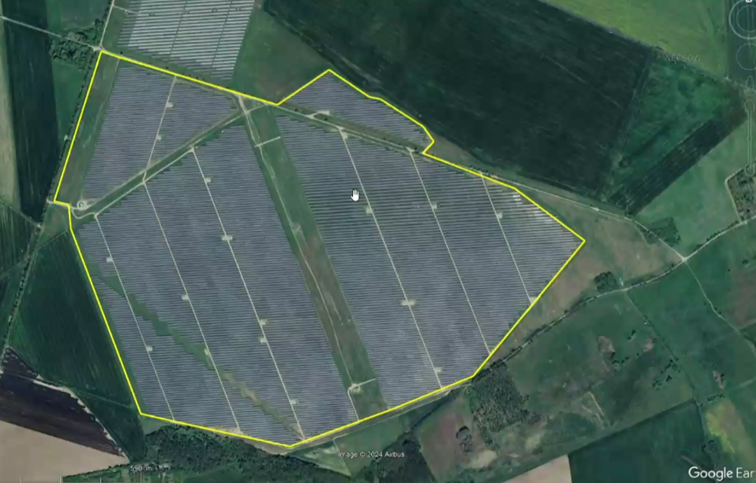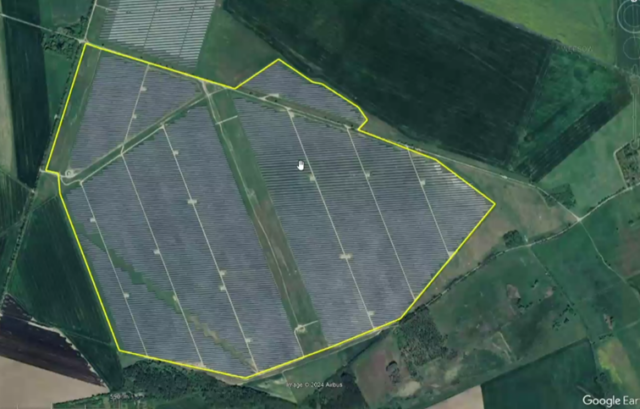Weesow-Willmersdorf solar park
The Weesow-Willmersdorf solar park is located just a few kilometres outside of Berlin in the Barnim district of Brandenburg and is operated by EnBW Energie Baden-Württemberg AG. With an area of 164 hectares and an output of 187 megawatts, it is the most powerful and largest solar park analysed in this study. The plant has been in operation since 2020 and has been realised in several construction phases.
More information on the Weesow-Willmersdorf solar park can be found on the official EnBW website: https://www.enbw.com/unternehmen/themen/solarenergie/solarpark-weesow-willmersdorf/

EnBW Energie Baden-Württemberg AG
187 MW
164 ha
2020
Brandenburg
52.6483092745 - 13.6950341003
Arable land, approx. 1% Intensive grassland
Table of contents
| Species groups | Investigated |
|---|---|
| Plants | |
| Locusts | |
| Butterfly | |
| Dragonflies | |
| Reptiles | |
| Amphibians | |
| Birds | ✔ |
| Bats | |
| Miscellaneous |
✔ = Investigation carried out on behalf of the operators
Natural environment and special features
The area surrounding the solar park is heavily characterised by agriculture. The "Weesower Luch" Flora-Fauna-Habitat (FFH) and Nature Reserve (NSG) is located to the south of the solar park. The Borgsee biotope is adjacent to the west. The nearest development in the Weesow district of the town of Werneuchen is located approx. 300 metres to the east. The distance to the development in the district of Willmersdorf is approx. 500 m, to the development in the district of Löhme approx. 1.2 km. Wind farms with 11 and 25 wind turbines are located at a distance of approx. 500 m to the south and north respectively. The Werneuchen special landing site is located approx. 4 km to the south-east. It is orientated towards the business traffic of Berger Bau GmbH and serves the air sports of the local clubs. There are also numerous other solar parks around the airfield, some of which were built in 2010 and cover a total of around 60 hectares.
Floor
Construction method
0.6
3m
20°
6 pieces
22mm
The frames are anchored to the ground with steel piles.
The modules contain monocrystalline solar cells.
The paths are gravelled.
The row spacing varies greatly: 2.5 to 8.31 metres. The average is 2.98 metres. In addition, the solar park consists of five separate sub-areas with a wildlife park running through the centre. No skylark-free areas were realised within the plant.
Management
Sheep are grazed on the site from mid-March to October with subsequent mowing. Bar mowers are used and the mown material is not removed. The grazing fields are grazed one after the other, but sometimes overlapping (not all grazing fields are grazed at the same time). Outside the fence, mowing takes place once in autumn, with the exception of the concession areas. The use of fertilisers or pesticides on the land is not permitted.
Equalisation measures
Outside the fenced-in areas, shrub plantings, Benjes hedges, stepping stone habitats (old wood piles, rock piles, sand walls), deciduous and fruit tree plantings, sowing of wild plant seeds and succession areas were planned.
